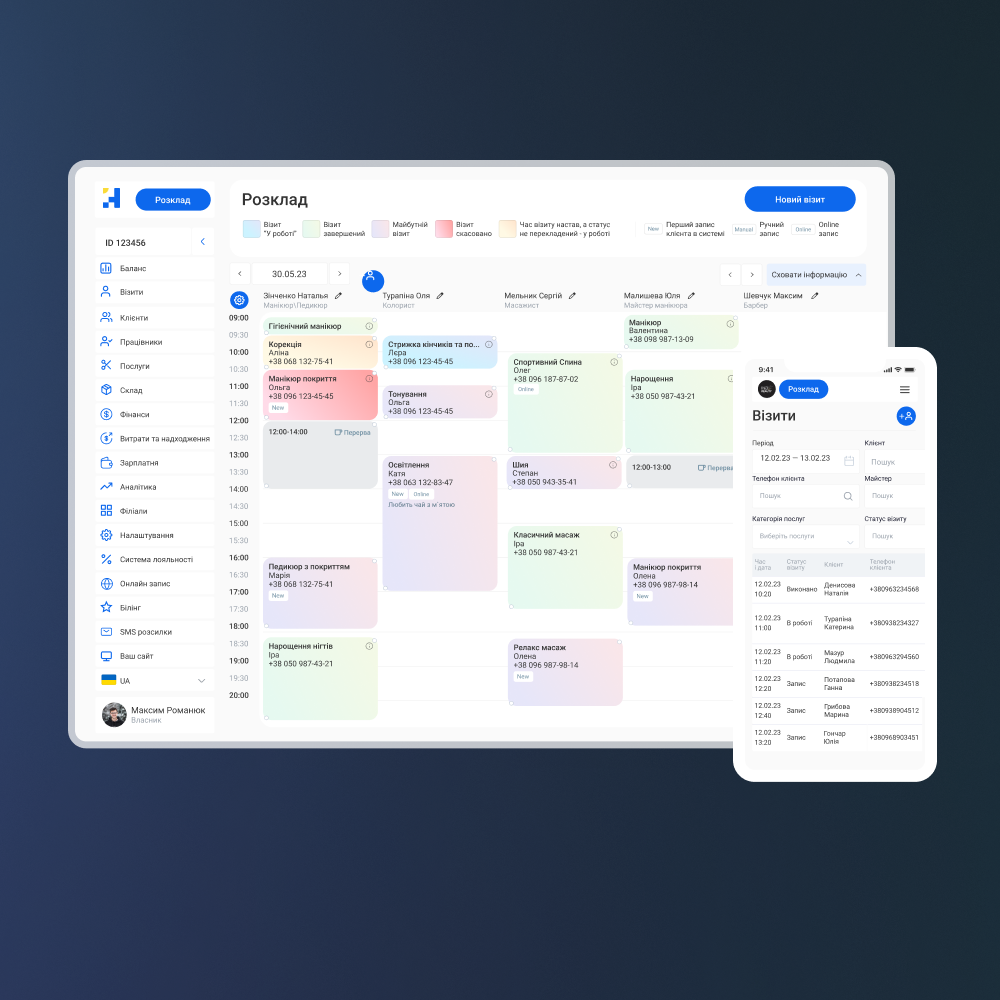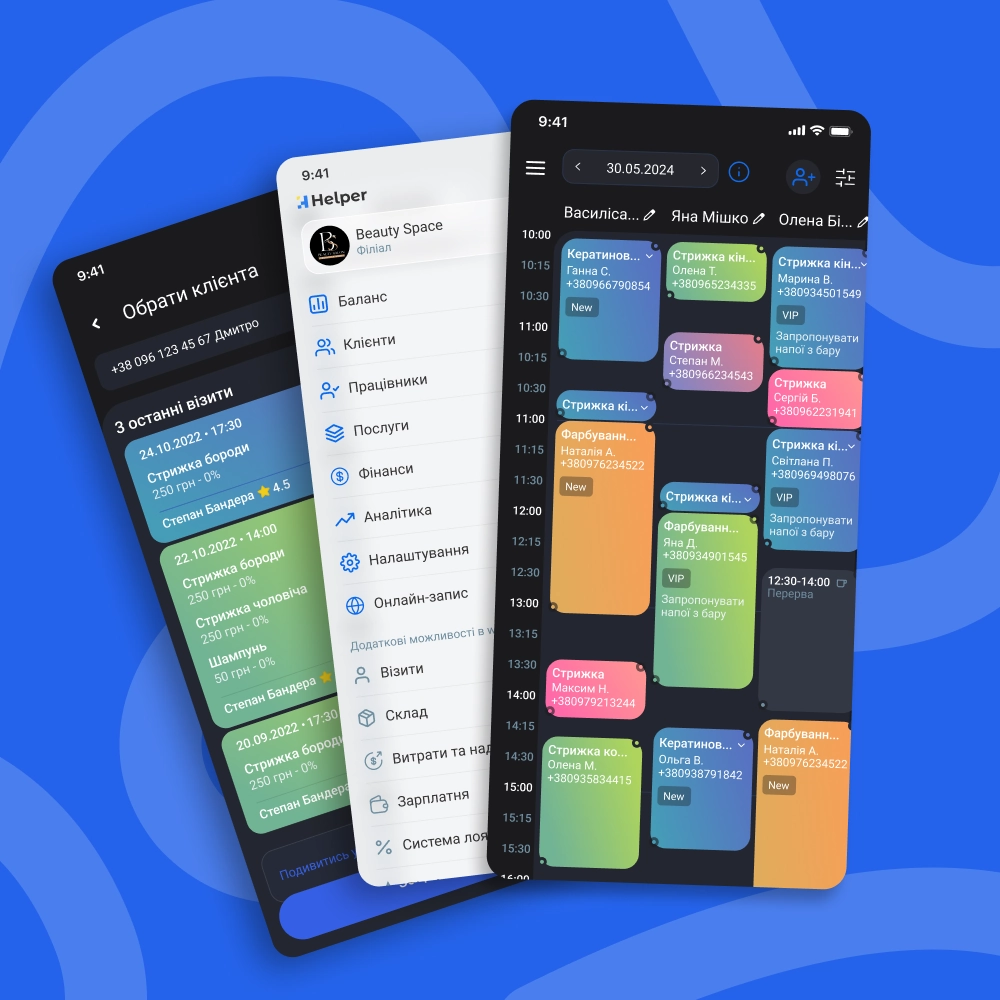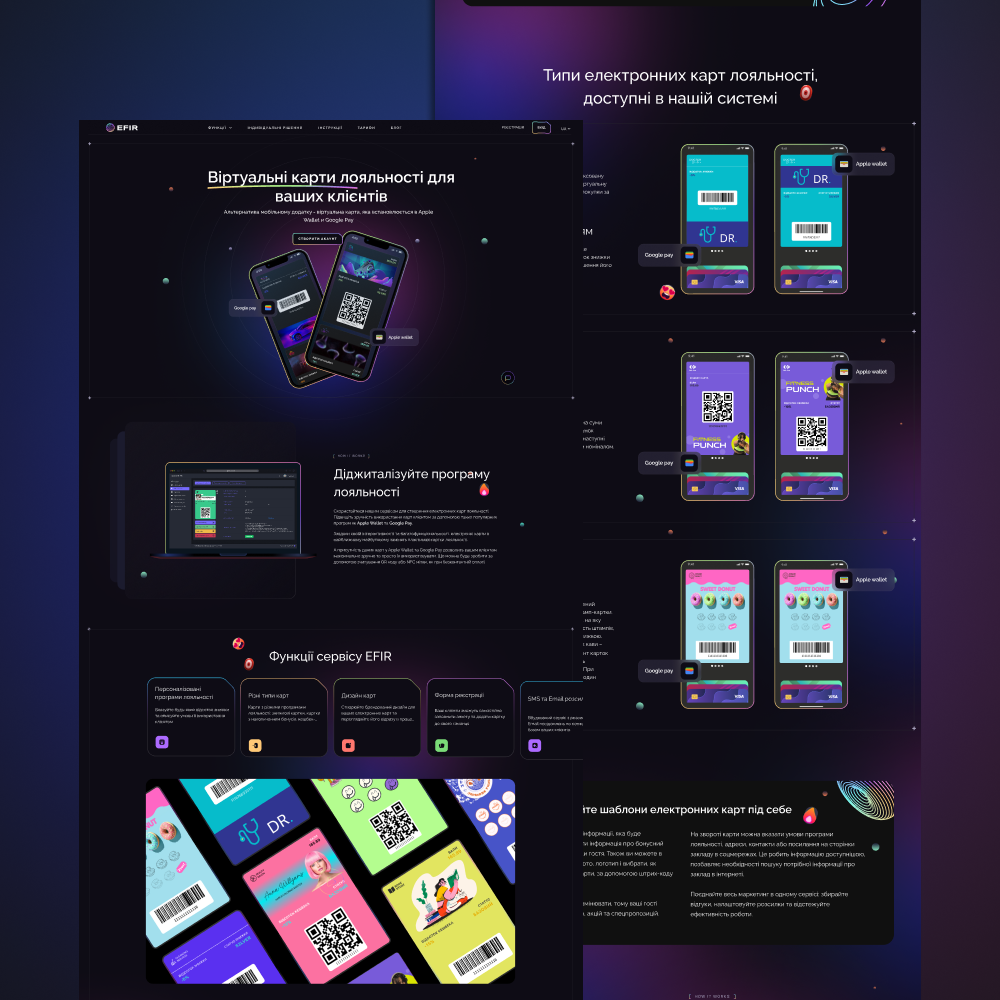








Voice assistant
Many companies regularly face high support loads and growing customer demands for speed and ease of service. Traditional communication channels often prove ineffective: lengthy forms, response delays, and multi-channel requests reduce conversion rates and lead to increased costs.
Voice assistants enable fast and natural communication . They take customer interaction to a new level by understanding natural speech and responding in a highly natural way. AI voice assistants are integrating across various platforms, becoming a unified, scalable communication system.
At AVADA MEDIA, you can customize voice assistants for specific business needs. Our team provides specialists who customize dialogue scenarios and implement AI voice agents based on modern natural language processing and synthesis technologies into any platform or tool.
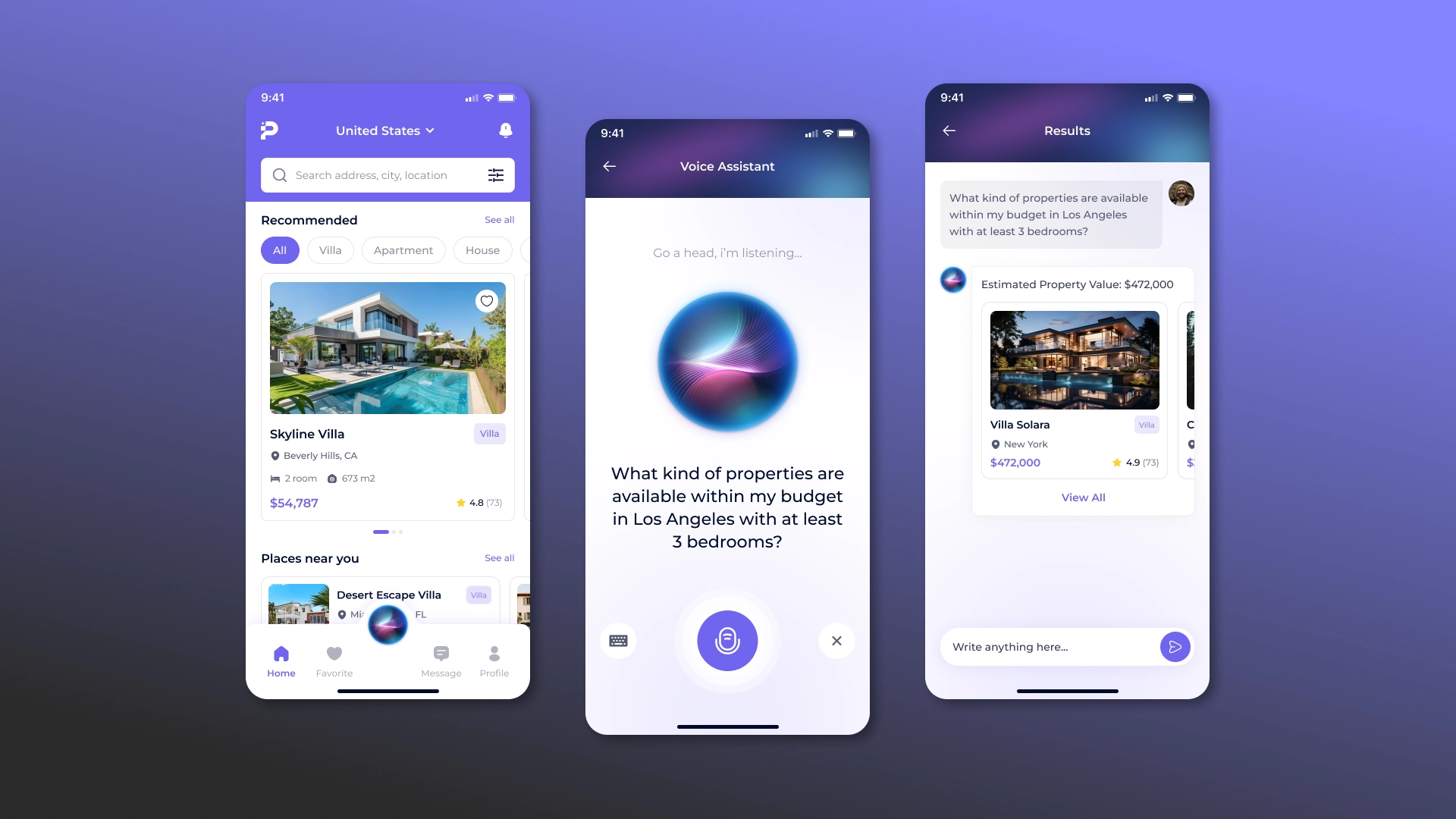
What is a voice chat bot?
A voice chatbot is a software solution that enables user interaction with a service or product using natural speech. It can accept voice commands, understand their meaning, and generate an immediate response. A voice-activated AI assistant automates routine tasks, speeds up customer service, and reduces the workload on staff by providing a more convenient and accessible communication channel.
How to create a voice chat bot
The development of voice assistants combines several modern technologies.
- NLP (Natural Language Processing) is used to process natural language. This enables the system to understand the meaning of what the user says, interpret queries, and respond correctly to a variety of wording variations.
- TTS (Text-to-Speech) helps transform the assistant's text responses into natural, easy-to-understand speech, supporting various languages and voices.
- Thanks to ASR (Automatic Speech Recognition), the voice agent accurately and quickly recognizes speech, converting the user's voice into text for further NLP processing.
Together, these technologies make it possible to create a voice bot that naturally communicates with users and effectively solves their problems.
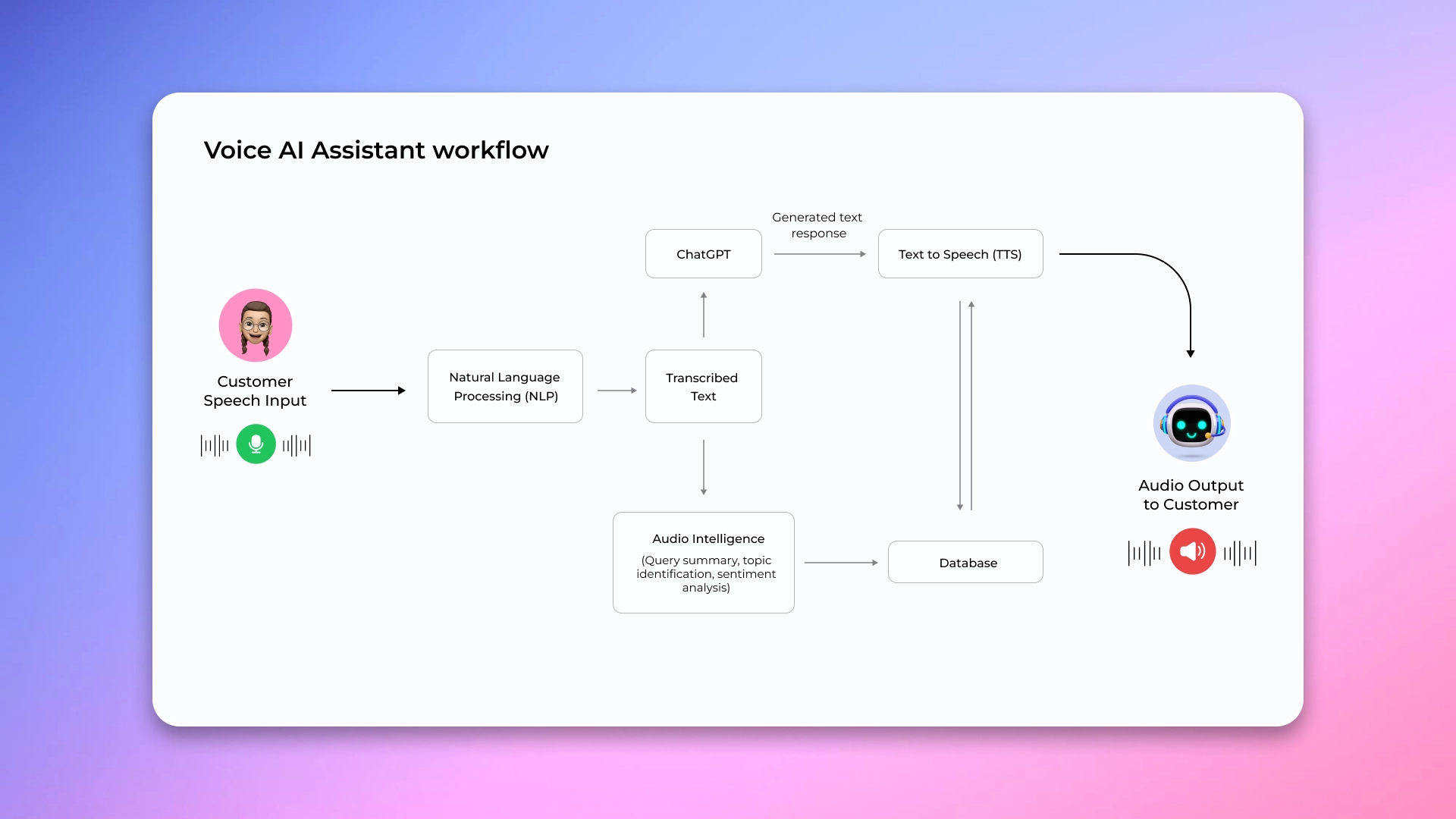
Where can I enter an online voice chatbot?
Voice assistants are used in a wide variety of digital environments because they enable users to interact more efficiently and conveniently.
- Voice-activated AI agents on websites and online stores provide visitors with instant answers to questions, find the information they need, and place orders without manual data entry.
- Built-in AI voice assistants in iOS and Android mobile apps simplify tasks and make services more accessible to users.
- Progressive web apps with AI bots allow users to interact with the service without typing, quickly get answers to questions, clarify details, place orders, and receive personalized voice recommendations. An AI voice assistant provides a natural and interactive experience, making the cross-platform app even more convenient.
- Messengers with AI voice agents handle customer inquiries directly in the normal conversational environment. An AI voice bot instantly answers questions, provides consultations, clarifies order details, and performs standard operations without human intervention. It preserves the context of the conversation and integrates with CRM and other systems, providing a unified and manageable communication channel. We develop and implement AI agents for Telegram, Viber, WhatsApp, and other messengers.
- IoT and smart devices with voice assistants are gaining enhanced capabilities. They allow smart speakers and other connected devices to access services and information without manual input. Integration with various IoT platforms allows AI voice assistants to be used in a wide variety of scenarios.
- Voice-activated AI agents in CRM/ERP systems and corporate portals enable employees to quickly find documents, create reports, and create tasks, making internal processes faster, more accurate, and more transparent.
- Configurators with AI agents , integrated into product or service catalogs, allow users to select parameters, clarify details, and receive voice recommendations. This is relevant for e-commerce, automotive platforms, real estate, and other services with multiple options. We specialize in developing 2D/3D configurators, including those with AI voice agents, for all business sectors, and we also integrate them into corporate systems as part of comprehensive automation.
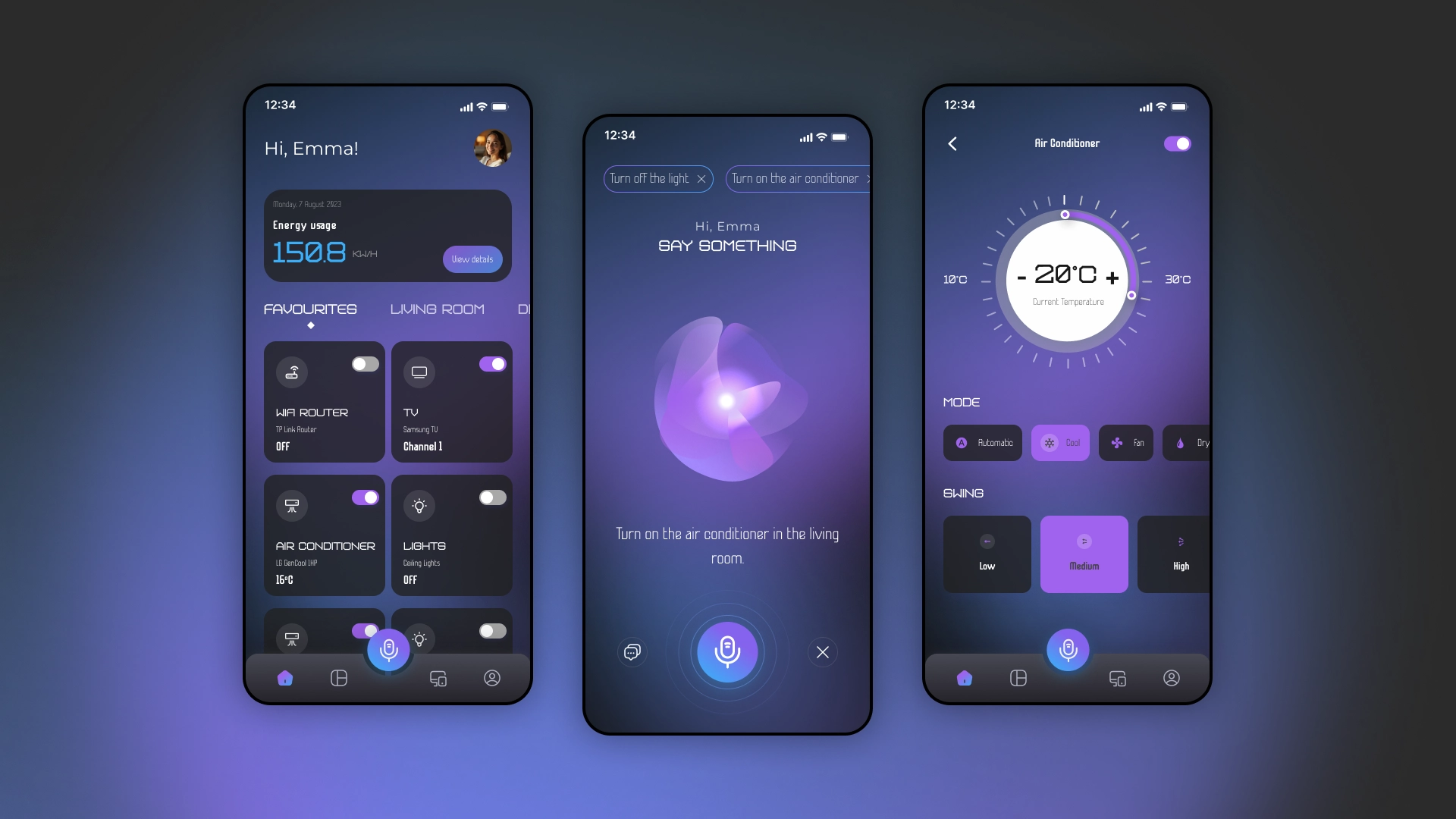
The use of voice assistants in different areas of business
An AI voice assistant will be useful in virtually any industry with a heavy support workload and repetitive operations. It is indispensable in areas where speed of service and accurate request processing are crucial:
- In eCommerce, it increases conversion and reduces bounce rates by helping customers quickly find products, clarify specifications, place orders, and receive personalized recommendations;
- In the banking sector, it reduces the workload on operators and speeds up customer service by processing standard banking transactions – balance checks, transfers, product consultations;
- Educational platforms with built-in voice agents in messengers or interfaces support interactive lessons, answer questions, help with tests and assignments, providing personalized learning and feedback;
- In the service sector and service companies, AI voice chatbots allow for the acceptance and registration of requests, consultation with clients, and the automation of service bookings, reducing the time it takes to process requests;
- Car sales companies are introducing such agents to select properties, clarify parameters, and process orders, in particular in car configurators;
- A voice bot for a call center can handle incoming calls, qualify requests, and route them to the appropriate specialists.
The AI voice assistant is a modern, versatile, and flexible tool. It seamlessly integrates into a company's digital ecosystem, improving efficiency, convenience, and customer satisfaction.
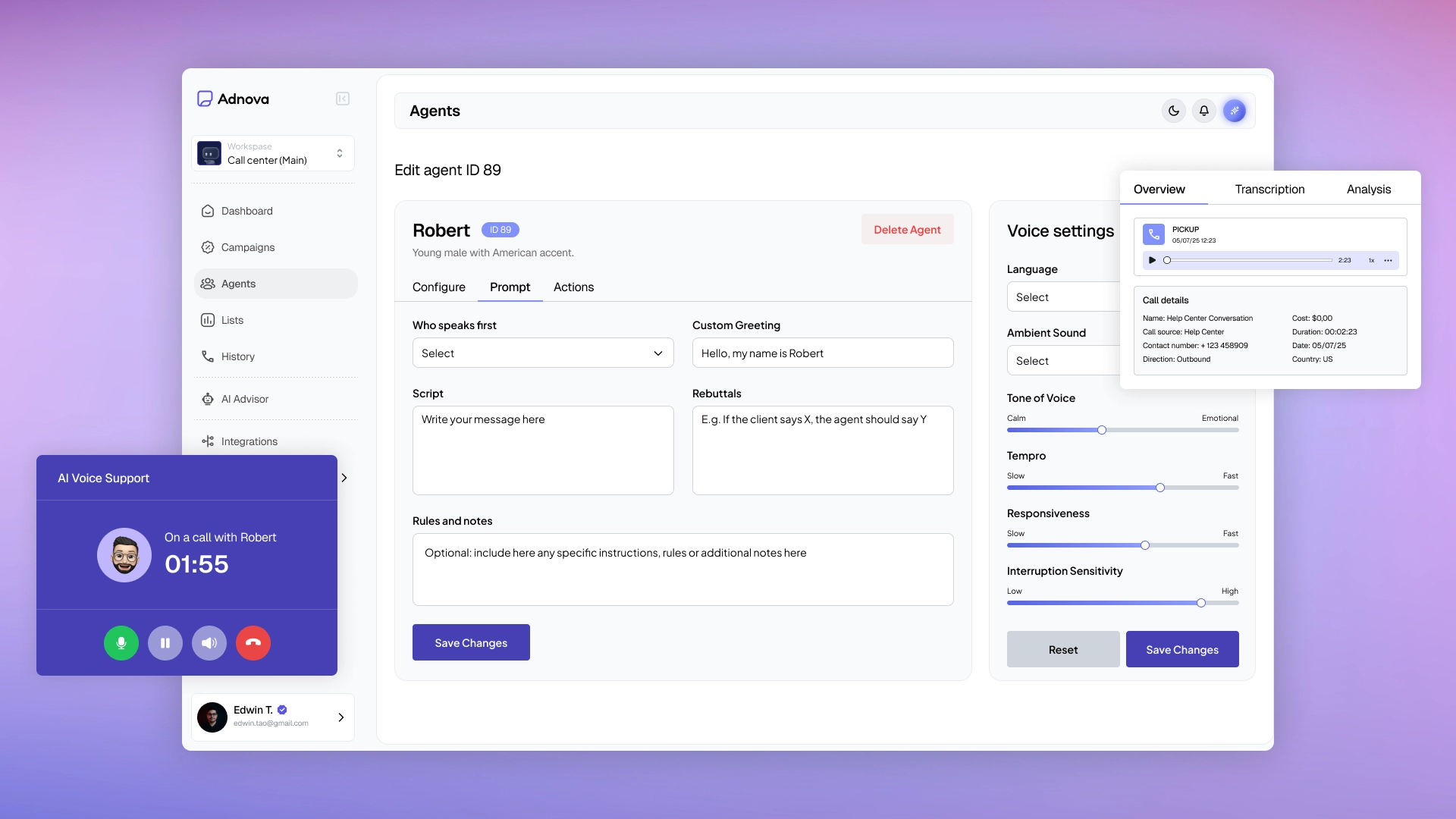
Stages of voice assistant implementation
To ensure that the AI voice agent brings maximum business benefit and meets customer expectations, we build a clear, consistent development and implementation strategy.
- Business process analysis. In the first stage, our specialists determine which tasks can be automated, which ones take the most time, and what types of requests are most frequently received from customers. This helps us understand which scenarios should be delegated to a voice assistant and which should be left to operators.
- Designing dialogue scenarios. Based on the collected data, communication schemes are developed, describing the logic of the voice assistant's interactions with the user. It's important to include several dialogue scenarios: from simple answers to frequently asked questions to complex multi-level consultations. Industry specifics, potential erroneous answers, connection interruptions, and the need to redirect the call to an operator should also be considered. A well-designed scenario reduces errors and makes interaction as natural as possible for the user. AI integration using the RAG method allows the assistant to access internal knowledge bases and respond as accurately as possible.
- Training an NLP model on industry-specific data . To ensure the voice assistant understands customers and can respond as accurately as possible, its NLP model is trained on specialized data from a specific business sector. This could include call center transcripts, FAQs, operator scripts, documents, and other corporate materials. This approach allows the assistant to use professional terminology, recognize different formulations of the same request, and respond in a company-specific manner.
- TTS (voice, language, and style selection) configuration . To optimize the voice assistant's user experience, the TTS (text-to-speech) system is configured. Male or female voices, accents, speed, and intonation are selected. If necessary, multiple voices can be used for different tasks—for example, a formal style for official messages and a more user-friendly one for customer support. Multilingual support is also configured if the company serves multiple regions.
- Integration with digital infrastructure . An assistant becomes truly useful only with deep integration. It should be able to create requests in the CRM, check order statuses, and send data to analytics. The voice assistant can also connect to the website and mobile app to provide a unified user experience. To set up these connections, we use n8n, a convenient automation tool that allows you to connect your voice assistant to any service without complex programming. Learn more about automating AI agents with n8n.
- Testing and optimization . After development, comprehensive testing is conducted to assess all the capabilities of the voice bot, including speech recognition quality, dialogue script compliance, NLP accuracy, and system response speed. Based on the testing results, scripts are adjusted and the agent's performance is optimized.
- Voice bot launch . The voice agent is being transferred from the test environment to real-world operation. At this stage, all integrations are functioning reliably, and responses correspond to the scripts and meet all user requests.
- Support and Development . After the voice assistant's launch, we offer ongoing support, including model updates, implementation of new scenarios, and adaptation to changes in business processes. Support also includes tracking performance metrics such as average call duration, resolution rate, and customer satisfaction. As statistics accumulate, the assistant becomes more accurate and effective, delivering long-term benefits to the company.
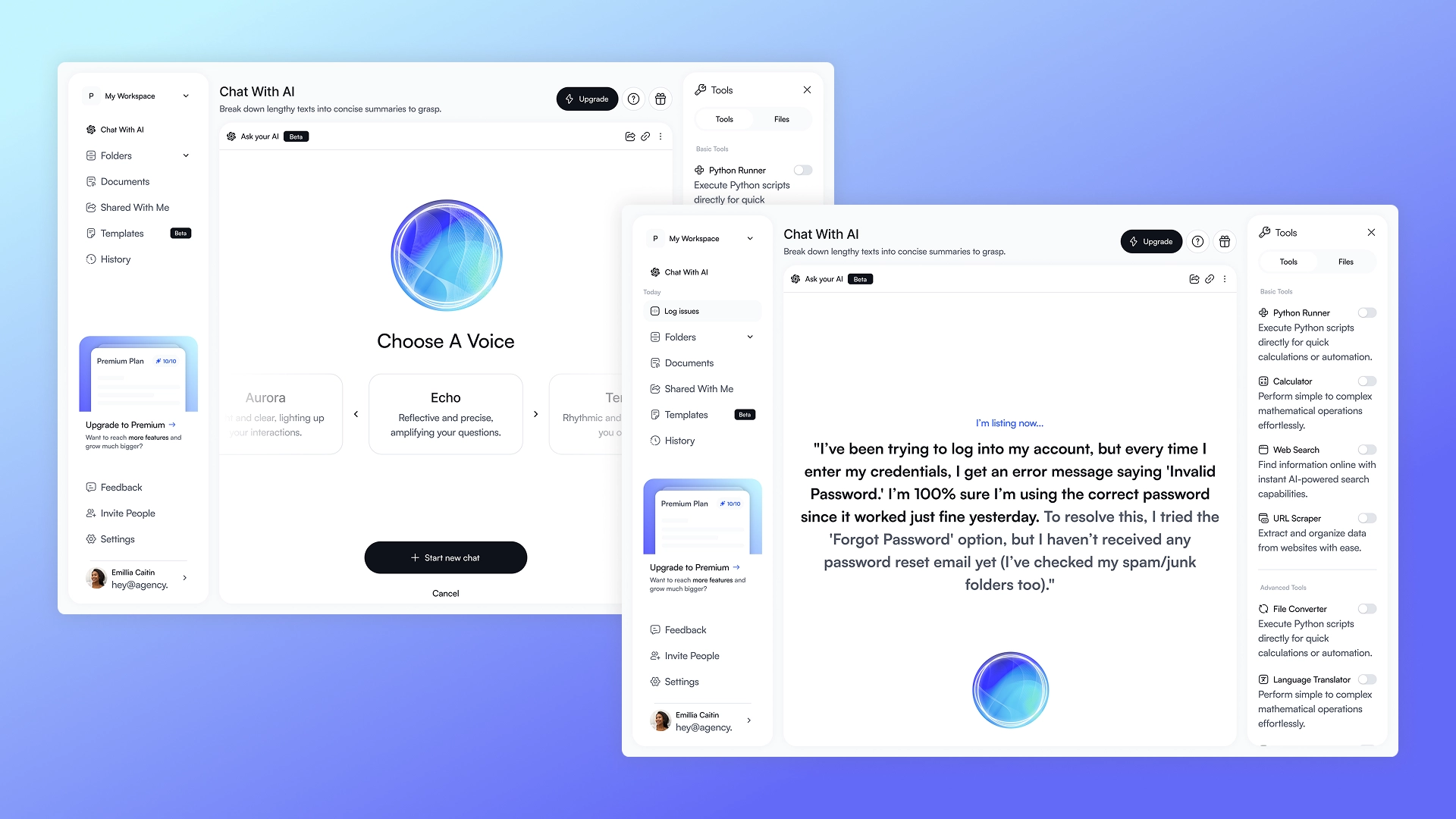
What benefits does a voice AI agent provide to a business?
The benefits of voice bots for businesses extend beyond process automation. These AI assistants open up new opportunities for growth and improved customer experience.
- They simplify customer interactions , making the communication process natural and comfortable. Users simply need to say what they need, without filling out forms or chatting. This significantly reduces the time it takes to process requests and lowers the barrier for those who previously put off calling or inquiring due to complexity or inconvenience.
- They increase conversion and revenue by making the customer journey shorter and more convenient, meaning more requests, purchases, and payments are completed.
- They reduce the workload of managers by performing many routine tasks, such as answering common questions, processing requests, and clarifying details. This frees agents to focus on complex cases and high-value sales, making the team more efficient and eliminating the need for additional staff.
- They process thousands of calls and requests simultaneously , allowing the company to serve more clients without increasing costs and quickly adapt to peak loads – for example, during promotions or seasonal sales.
- Accessibility for users with disabilities —those with visual or motor impairments, or those who struggle to use keyboards or touchscreens. This approach makes businesses more inclusive and wins the loyalty of a previously overlooked audience.
Thus, by implementing a voice-based AI agent, companies gain a powerful growth tool that allows them to serve more customers, reduce costs, and strengthen their competitive advantage.
How to order a voice AI assistant?
AVADA MEDIA will help you implement a voice or text bot for your website, messenger, PWA, or mobile app to create a unified omnichannel experience. Our specialists have over 10 years of experience developing and integrating business automation solutions . With us, the process takes optimal time, and the price is fully consistent with the quality and professionalism of our team.
If you're planning to order a voice bot for business automation, choose AVADA MEDIA for your project. You'll receive a stable and effective intelligent assistant that adapts to any digital platform and business scenario. Upon request, we continue to support the AI assistant after launch: updating knowledge bases, expanding scenarios, and implementing new features and languages. Contact us today to discuss your idea, goals, and project implementation.
FAQ
-
Is it possible to develop a multilingual AI voice bot?
Yes, a single voice assistant can handle multiple languages. We use NLP and TTS models that accurately recognize languages and generate responses tailored to each target audience. If necessary, the system supports localization not only by language but also by regional communication specifics.
-
How does a voice-activated AI assistant handle complex and challenging customer questions?
If an agent has difficulty answering a request, the scenario assumes the customer is correctly transferred to an operator. To handle non-standard requests, the RAG approach is used, allowing the agent to access internal knowledge bases, documentation, and FAQs. Learn more about integrating AI agents with the RAG approach.
-
Is it possible to customize the AI voice assistant's response to match your brand's tone?
Yes, the communication format is completely customizable to the brand: we can set a formal or friendly tone, incorporating signature phrases and terminology to maintain the corporate style.
-
Are there any limits on the number of users or requests?
A single agent can handle thousands of conversations simultaneously and is easily scalable. We help clients select optimal server and integration settings to ensure high performance and consistent response quality.
-
How is the cost of implementing a voice assistant determined?
The cost depends on the project's complexity, the number of integrations, dialogs, and technologies used. Pricing is always negotiated individually and adjusted to specific tasks and timeframes.
-
Is it possible to integrate a voice assistant with external services, such as payment systems or delivery?
The AI assistant connects to any external services via API, allowing for automatic order processing, payment and delivery status checking, and data synchronization with other systems. For reliable and flexible integrations, we use low-code builds via the n8n platform.
-
Is it possible to track statistics and reports for each dialogue in real time?
Yes, the system collects key metrics: number of requests, response success rate, average conversation time, and other indicators. This helps quickly identify bottlenecks and improve the assistant's performance. Analytics can be connected via CRM or third-party services for visual reports.
-
Is it possible to connect a voice bot for calls and integrate it with CRM?
Yes, the voice bot can handle both incoming and outgoing calls. Integrating the AI bot with your CRM allows you to save call recordings, add notes to customer cards, record call results, and run automated scenarios, such as assigning tasks to a manager.
-
Can a voice chatbot replace a live operator to answer calls?
A voice chatbot can take over a significant portion of a human operator's workload, but it won't completely replace a human operator in complex, non-standard situations where empathy and flexibility are required. The optimal model is for the bot to handle 70–80% of calls, with live agents only involved when a personalized approach is needed.




